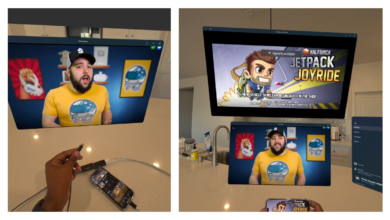
Classic JRPGs are sort of having a moment. has brought new life and a new generation of gamers to one of the most iconic franchises around. More recently has given us a spiritual sequel to Ogre Battle that’s so good even series creator Yasumi Matsuno (and director of Final Fantasy Tactics) has . And later this summer, Square Enix has challenged itself with reimagining one of the most beloved SNES titles of all time after more than 15 years. But now I’ve had the chance to play a preview of Visions of Mana, it feels like the developers have retained the spirit of the franchise but in a game that feels much more at home in 2024.
One of the biggest challenges for Visions is the transition from classic 2D sprites to a much richer and more expansive 3D world. And while there are some visual similarities to recent Dragon Quest games, I think Square Enix has done a wonderful job of maintaining the franchise’s identity. The game’s color palette is bright and energetic, recreating many of the pastel hues seen in previous games. Character designs skew more towards cute and adorable unlike some of its darker and edgier rivals, which gives the title a playful vibe, just like Secret of Mana did more than two decades ago.
Another thing that has translated quite well is its gameplay. Back in 1993, Secret of Mana’s ring menu was lauded for making it easy to switch between weapons and items (or even characters) without making combat feel stilted or clunky. And with the Mana franchise having made the jump to action-orientated gameplay (instead of turn-based) way before mainline Final Fantasy games did, Visions’ assortment of speedy combo-based attacks, spells and class strikes (which are sort of like limit breaks) are a great fit. You can even launch enemies in the sky and rain down blows while they’re suspended, which is a real treat as I’m a sucker for any game with air juggles.
Each of the four main characters (Val, Hinna, Careena and Morley) also have distinct classes like Rune Knight or Oracle, so they all have a unique style and feel in combat. I found myself gravitating towards the thief/catdude Morley, whose katana felt extremely fast and fluid. My only small complaint is that with Square also bringing back the concept of three-person parties, things can get kind of hectic when you’re trying to keep tabs on people performing multi-hit combos against large groups of foes.
The most important addition to Visions is the introduction of Elemental Vessels, which give you new abilities both in and out of combat. When you’re simply running around the map, similar to items like the hookshot in Legend of Zelda, vessels provide important traversal abilities. For example, the Sylphid Bommering allows you to create floating platforms so you can cross valleys and chasms or summon gusts of wind so you can jump to a faraway ledge. Meanwhile in battle, you can use the boomerang to trap enemies in the air, deal damage and blow away surrounding foes that might want to interrupt your attack. So while it’s not a groundbreaking feature, I appreciate how Visions is using new mechanics to add an extra layer of depth to multiple facets of the game.
Unfortunately, one trait of previous Mana games that hasn’t carried over to Visions is the use of a big roster with branching storylines. For longtime fans, this might be a bit of a bummer, but when asked about this change, Visions of Mana producer Masaru Oyamada told me (via an interpreter) that one of the team’s goals for this installment was a more focused story. So while I couldn’t glean much about the game’s plot during my one-hour demo, there’s still hope that Visions will still deliver an engaging narrative.
But my biggest takeaway from the preview is how Oyamada is trying to respect the legacy of such a storied franchise while also delivering fresh and exciting experiences for new and old players alike. Oyamada said “I really thought about the elements that I loved when I was a child, so I leaned into those feelings in order to drive decision making for the latest installment in this series.”
On top of that, I like how mechanics like the Ring menu are pulling double duty in this game. Oyamada told me that not only does this system act as a nod toward players familiar with the franchise, it also serves as an important accessibility tool that makes it easy to switch items and plan your attacks in the heat of battle. Meanwhile, to help the series grow and evolve, Oyamada said “We thought about the elemental aspect as something that was kind of under-utilized and under-appreciated in previous Mana games.”
And with Oyamada having been in charge of the remasters for Secret of Mana, Trials of Mana (AKA Seiken Densetsu 3) and others in recent years, even though much of the original development team for the series has moved on, it’s clear Square Enix has preserved a lot of the DNA that made previous Mana games so great all those years ago.
In some ways, I wish this game was called Spirit of Mana, as that feels like a more appropriate title for a series whose last entry was released in 1995. Regardless, I can’t wait to play more when Visions of Mana officially goes on sale sometime this summer.
One final note is that Visions of Mana is slated to be available on PlayStation 4, PlayStation 5, Xbox Series S/X and PC. Currently, Square Enix says that while “We are looking to support Steam Deck compatibility, we cannot confirm at this time as we are still optimizing the game.”
Source link





